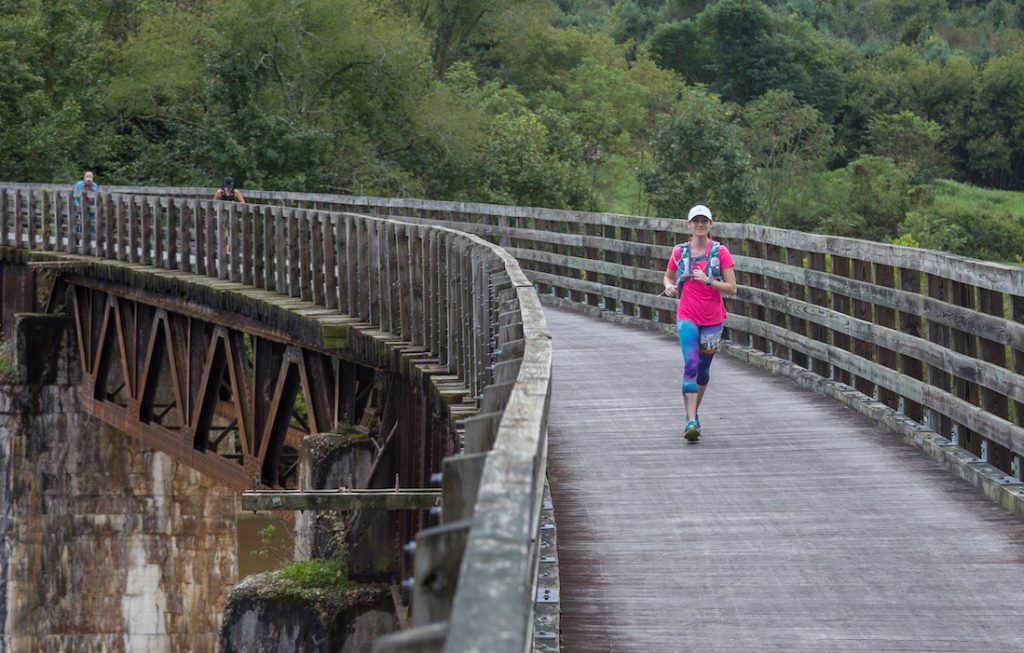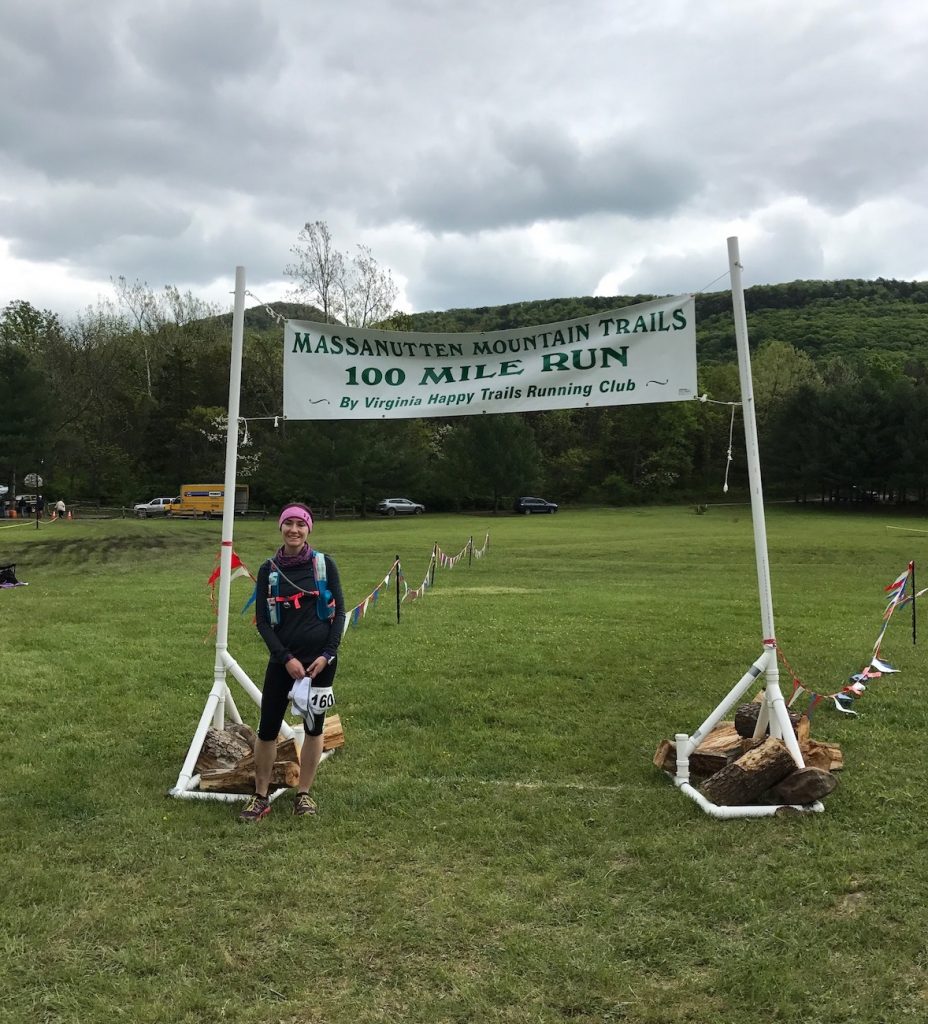Main Menu
Iron Deficiency in Female Athletes

Madeline is an ultra runner and registered dietitian living in Northern Virginia. She loves being in the mountains with her family, and spends most of her free time hiking and trail running in Great Falls or Shenandoah National Park.
Share This Article!


By: Madeline Radigan
Iron is a mineral that aids in transporting oxygen throughout the human body, and is critical not just for performance, but for human survival. Every organ and muscle we have depends on this tiny compound to continue beating, breathing, moving…Iron is a component of hemoglobin, which is the protein responsible for the transportation of oxygen from the lungs to all other parts of the body. Without adequate iron stores, our bodies lack the oxygen flow they need to function optimally.
Who Has Iron Deficiency?
It is not uncommon for athletes to experience iron deficiency at some point in their lives. As athletes, we ask far more of our bodies than the average individual; we require more efficient oxygen transport due to the fact that we use our muscles in different ways and push them to their limits more often. As a female athlete, iron deficiency becomes an even more prominent concern. The female athlete is at the highest risk of developing iron deficiency, and it’s estimated that 30 – 50% of female athletes are iron deficient to some degree.
What Causes Iron Deficiency?
Research is not entirely conclusive on one explanation of how iron deficiency happens in athletes. Let’s take a closer look into a few of the most common theories:
- Bodily losses: Endurance athletes experience gastrointestinal (GI) bleeding during prolonged or intense activities. Though this GI bleeding results in only a small portion of blood loss, research suggests that it may be significant enough to contribute to loss of iron during endurance events. Additionally, small amounts of iron are lost through sweat in the same way that we lose electrolyte minerals.
- Lack of dietary iron: It is well established that endurance athletes use more iron to aid in the oxygen transport needed for high intensity muscle movement. With this comes the understanding that dietary iron needs are increased; however, many athletes fail to increase their iron intake accordingly. This can be easily remedied by increasing iron-rich foods in the diet.
- Hepcidin increase: Hepcidin is a protein that regulates iron balance in the body. When the body becomes inflamed, hepcidin production is increased, and blood levels of iron are reduced. Endurance athletics can produce sustained levels of inflammation in the body, and this mechanism of hepcidin production has been theorized as a possible explanation for iron deficiency.
- Menstruation: Female athletes experience blood loss on a regular basis, and this puts them at higher risk for iron deficiency. The recommended dietary allowance (RDA) for adult women is more than double that of men due to their increased physiological need for iron. This becomes increasingly important for women participating in athletics.
What Signs Should I Look For?
Iron deficiency will most often present as fatigue or low energy. While many athletes experience fatigue after tough workouts or events, the fatigue that results from iron deficiency can be debilitating, and often paired with other symptoms.

Shortness of breath, dizziness, headaches, heart palpitations, or pale skin may also be prominent signs of iron deficiency. If these symptoms apply to you, reach out to your medical provider and ask for a blood test to check your iron status. There are a few crucial blood values that physicians can assess to determine whether or not someone is iron deficient, including ferritin, hemoglobin, and hematocrit.
How Can I Prevent Deficiency?
The best way to prevent deficiency is to ensure a balanced diet that provides plenty of iron. As a female, the U.S. RDA for iron is 18mg per day (as opposed to 8mg per day for men). As a female athlete this daily requirement is increased, although no official guideline has been put in place. It has been theorized through research that athletes require up to 70% more iron than the average individual, indicating that the female athlete could require up to 30mg of dietary iron per day.
Before we dive into dietary sources, let’s go over the two types of iron found in food:
- Heme iron is found only in animal sources, and is more readily absorbed by the body. During metabolism, it does not require a binding protein to make its way through the body.
- Non-heme iron is found in plant sources. It is typically less easily absorbed, and requires a facilitator during absorption to be used in the body.
If you partake in an omnivorous diet, the sources of iron are plentiful! Beef, chicken, turkey, and oysters are among the highest sources of heme iron available. Including these on a regular basis can help meet iron requirements.
For those on a vegetarian or vegan diet, plant sources are more than able to provide our daily iron needs. Beans, lentils, tofu, dark leafy greens, and fortified cereals are great sources of non-heme iron. Additionally, pairing plant sources of iron with foods high in vitamin C can significantly help with the absorption of non-heme iron.
What if I’m Already Deficient?
If you’ve qualified as medically iron deficient, never fear! Iron supplementation has been shown to be highly beneficial for individuals with low serum ferritin values, an indicator of iron status. Iron supplementation can be done orally or through an intravenous solution, and should be utilized under the supervision of a medical provider.
The Bottom Line Is…
If you’re feeling great and full of energy, you most likely don’t need to worry about your iron status – just keep up with your daily dietary iron intake! However, if you notice a consistent feeling of low energy and difficulty in training, it may be worth having your medical provider check your iron status to determine whether a deficiency could be the cause.
References:
Alaunyte, I., Stojceska, V., & Plunkett, A. (2015). Iron and the female athlete: A review of dietary treatment methods for improving iron status and exercise performance. Journal of the International Society of Sports Nutrition, 12, 1-7.
Clenin, G. E., Cordes, M., Huber, A., Schumacher, Y. O., Noack, P., Scales, J., Krimler, S. (2015). Iron deficiency in sports – Definition, influence on performance and therapy. Swiss Medical Weekly, 145, 1-15.
Heffernan, S. M., Horner, K., De Vito, G., Conway, G. E. (2019). The role of mineral and trace element supplementation in exercise and athletic performance: A systematic review. Nutrients, 11, 1-32.
Ishibashi, A., Maeda, N., Sumi, D., Goto, K. (2017). Elevated serum hepcidin levels during an intensified training period in well-trained female long-distance runners. Nutrients, 9, 1-9.
About the Author

Madeline is an ultra runner and registered dietitian living in Northern Virginia. She loves being in the mountains with her family, and spends most of her free time hiking and trail running in Great Falls or Shenandoah National Park.
Share This Article!












3 Responses
I recently found out I have low iron. My doctor recommended that I try to fix it through diet before looking at supplements, so when I took a closer look at how/what I was eating things started to make sense: although I eat lots of red meat I regularly had a mug of tea with each meal and ice cream after dinner, not knowing that tea and calcium inhibit the absorption of iron.
I have been shooting myself in the foot!
I’ve made a few simple changes (swap the ice cream for non-dairy desserts, move my mug of tea to mid-morning and afternoon, add more vitamin C to aid iron absorption) and while it’s probably too soon to see much improvement I do think my energy levels have increased. I’m glad I didn’t jump straight onto iron supplements BUT my iron levels weren’t catastrophically low either.
Thanks for the article. I’ve struggled with anemia and B12 deficiency. It seems that they always come together with fatigue and an inability to recover from seemingly easy work-outs. Although I eat a well balanced diet, I still require supplements. I’ve found using Floravital (a liquid iron with B12) and an additional B12 supplement allows me to improve my numbers, cut my fatigue and train for ultras. I also learned the same thing as Carolyn mentioned about foods that inhibit iron absorption. I’ve found it helpful to split my iron dose between the morning and evening to help with absorption, while waiting a couple of hours before enjoying dairy or caffeine.
I’m appreciative of this article as I first became anemic in college. Also, I’ve been more curious of how we lose iron, as the “we lose it through our feet” argument always seemed a little strange to me! I still take one vegan based iron vitamin a day and eat a ton of leafy greens…I haven’t had an issue in years. So the only bullet point I want to add contrary research to is that heme iron is the best, most absorbable source of iron. I used to believe that, started to eat stake, and had no increase in energy. Truly, eating animal sources for iron is just like eating the middle man…the animals are getting their sources of iron fro the food they eat. https://nutritionfacts.org/video/the-safety-of-heme-vs-non-heme-iron/